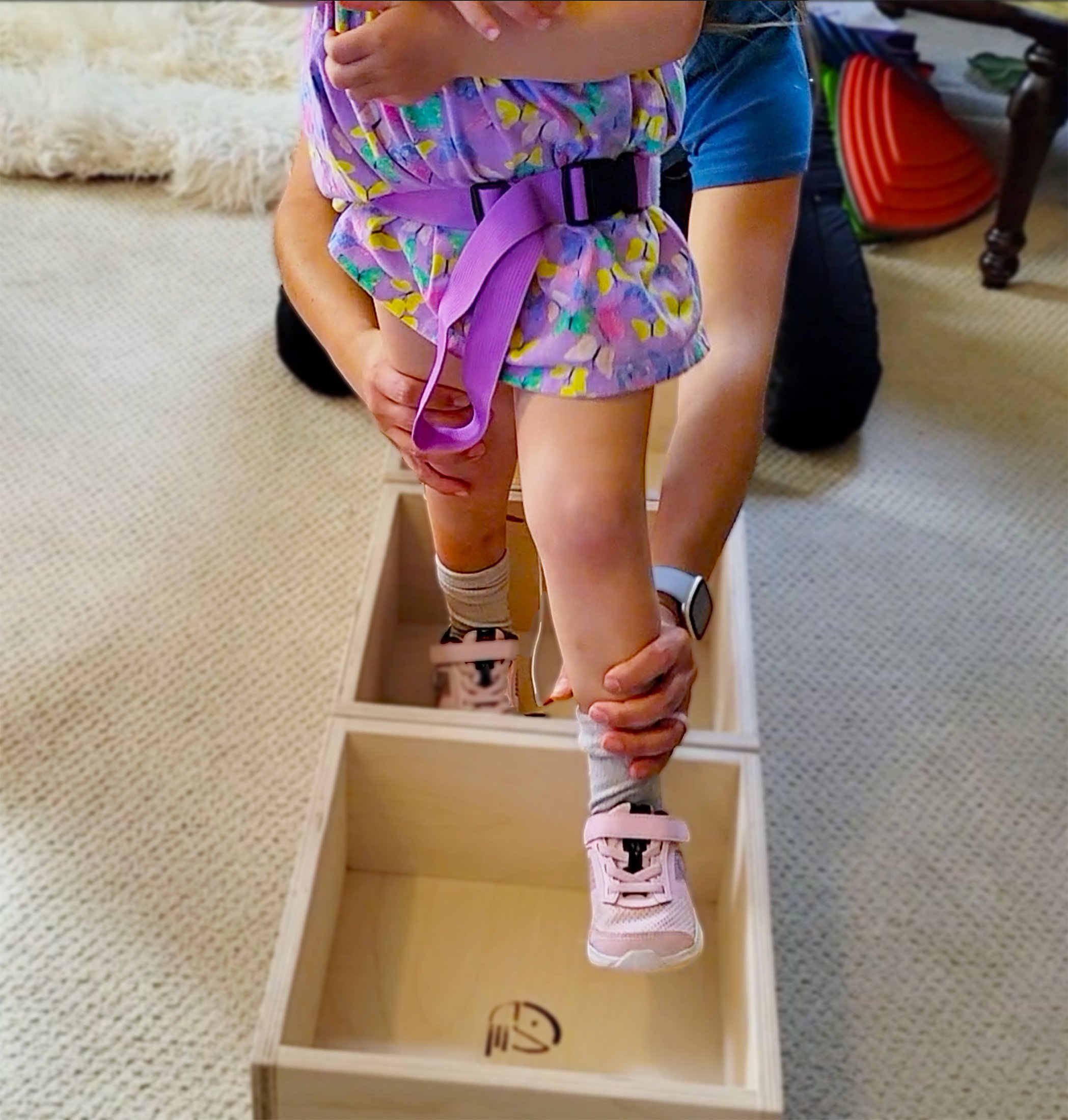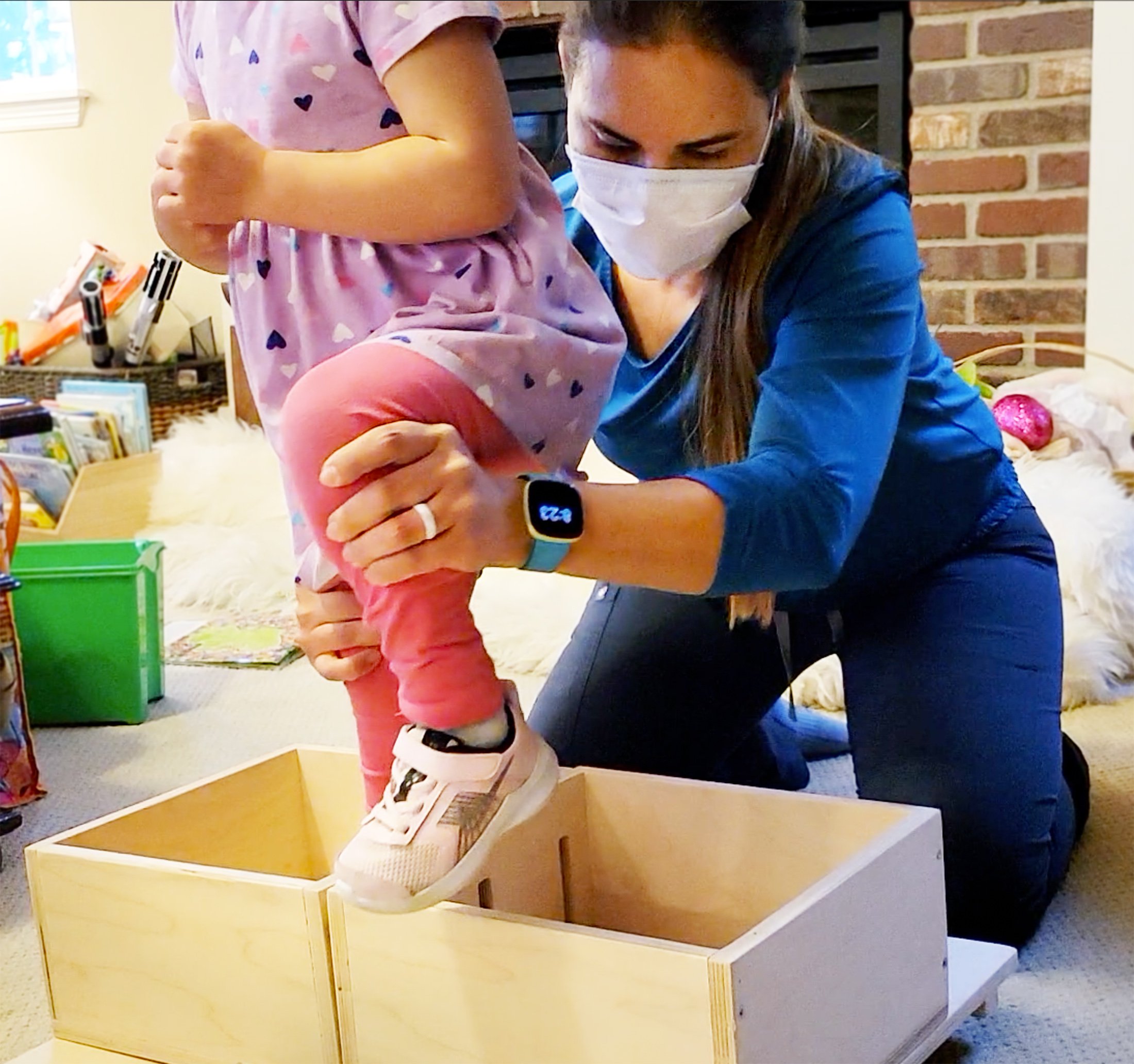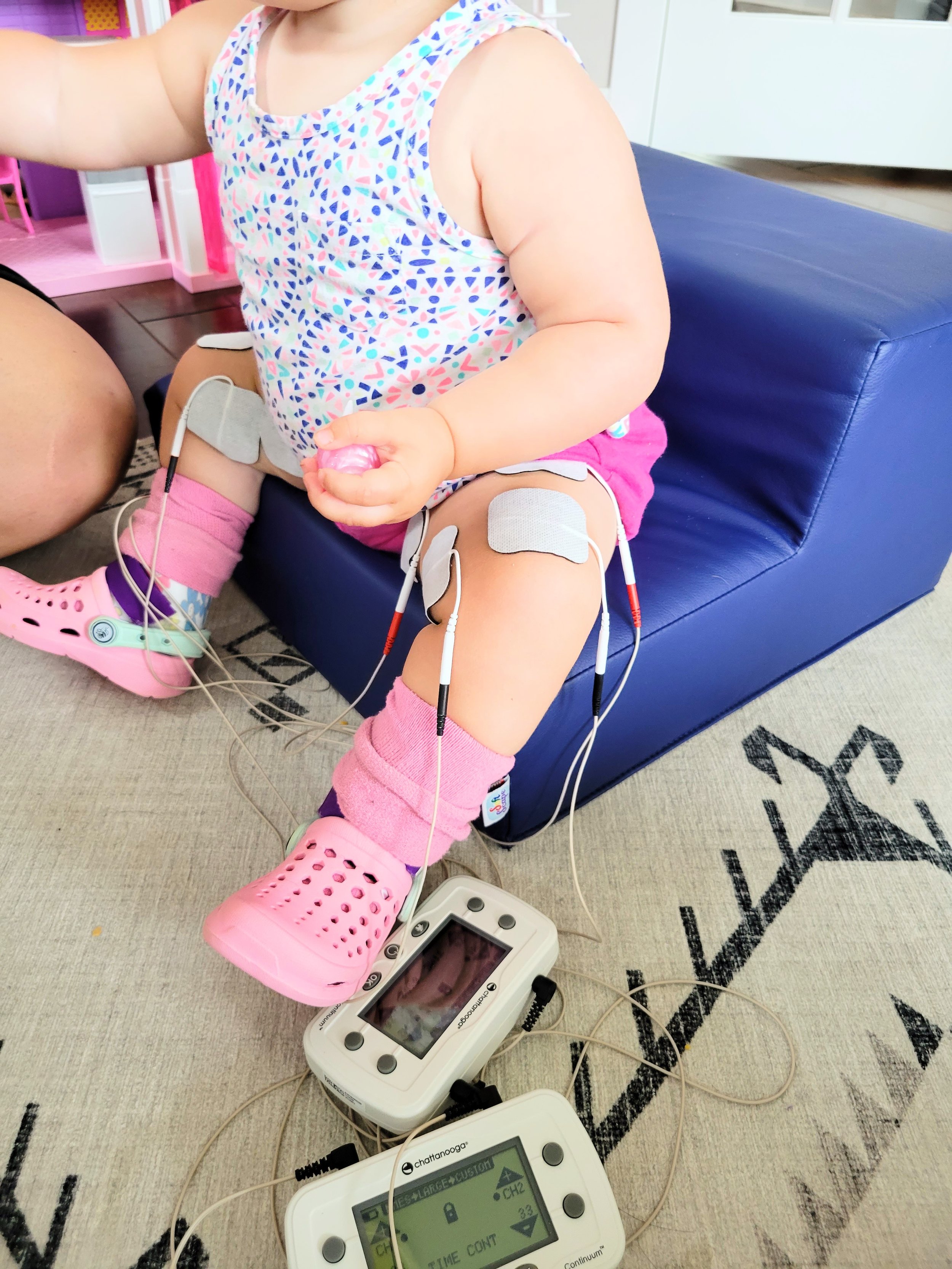Treatment for Children with Spina Bifida | Testimonial
The mother of a child with spina bifida shares her experience using electrical stimulation as part of the physical therapy program. They have been doing electrical stimulation for about five months, and she has made incredible progress with her motor skills. Now, she is rolling, crawling with assistance, and pulling up by herself. In physical therapy, we use electrical stimulation to activate muscles during transitions from sitting to standing, standing up with/without support, and walking. Her mom is highly dedicated to the home program using e-stim and has compiled a fantastic team to help her child get stronger and thrive.
What is spina bifida? Spina bifida is the most common defect of the neural tube. It is a congenital spinal defect in which the spine does not close completely. Usually, at the end of the first month of pregnancy, the neural tube begins to close, and it develops into the brain, spinal cord, and nervous system.
Myelomeningocele is the most severe type of spina bifida. It develops into a fluid-filled sac containing part of the spinal cord and nerves and protrudes from the baby's back.
Electrical stimulation is used as part of the physical therapy program for children with neurological diagnoses such as spina bifida and cerebral palsy.
There are several ways to use e-stim depending on the functional goal, such as rolling, crawling, standing up, or walking. For spinal stimulation, the electrodes are located on the spinal muscles (the baby's back) to facilitate an upright posture and increase the sensation pathways between the spine and the brain.
Another type of electrical stimulation called Functional Electrical Stimulation can be used on specific muscle groups like the abdominals, gluteus, and legs for facilitating activities such as standing up and walking.
**This content is not intended as a substitute for professional medical advice, diagnosis, or treatment.



